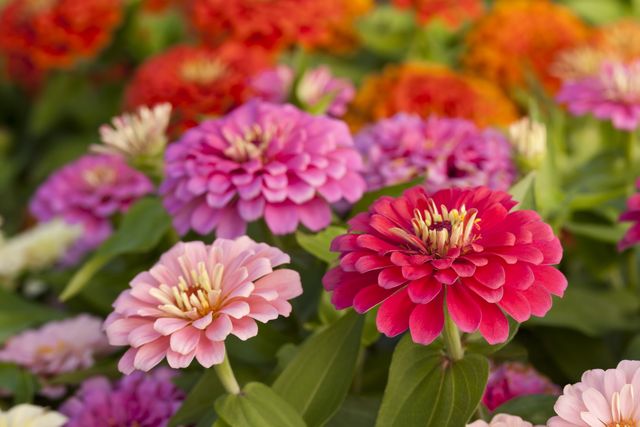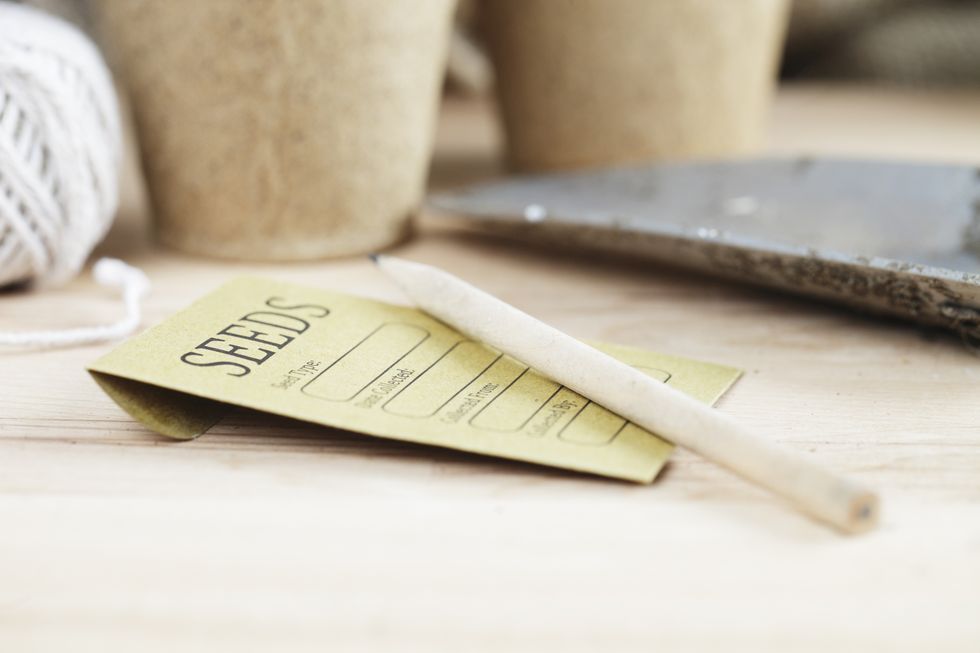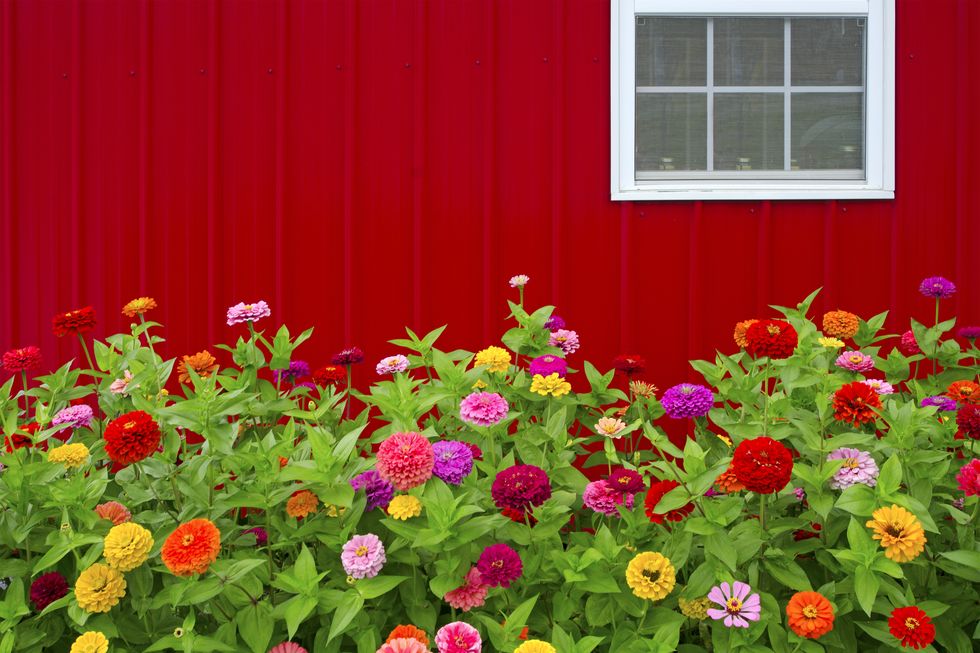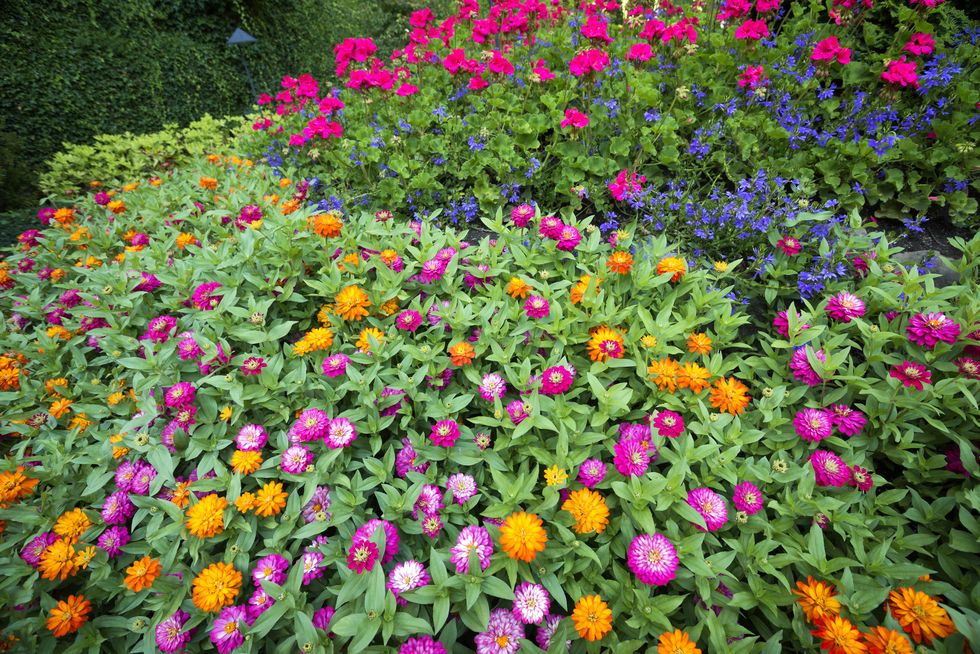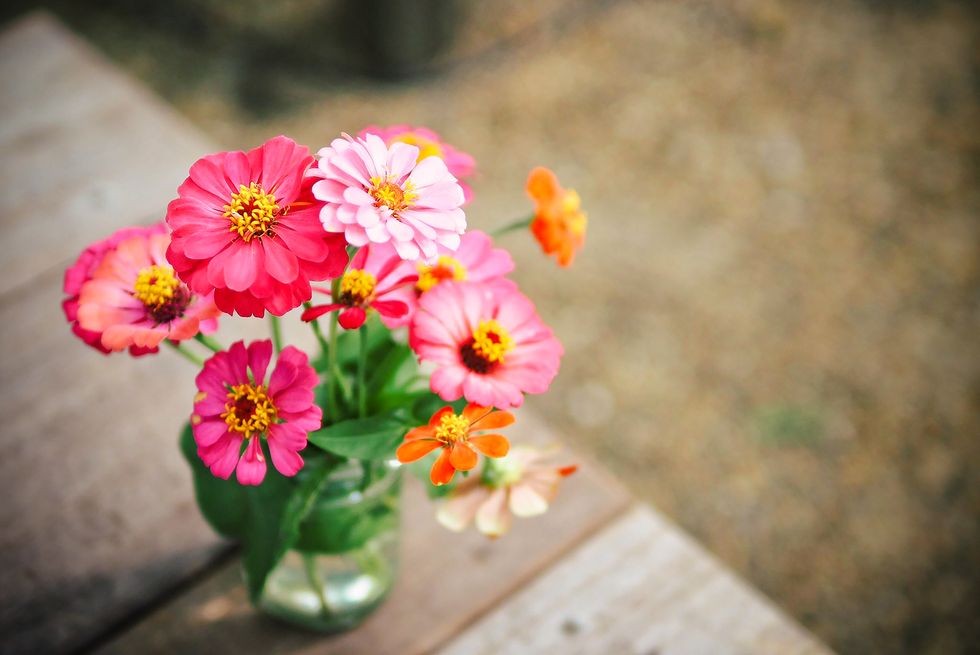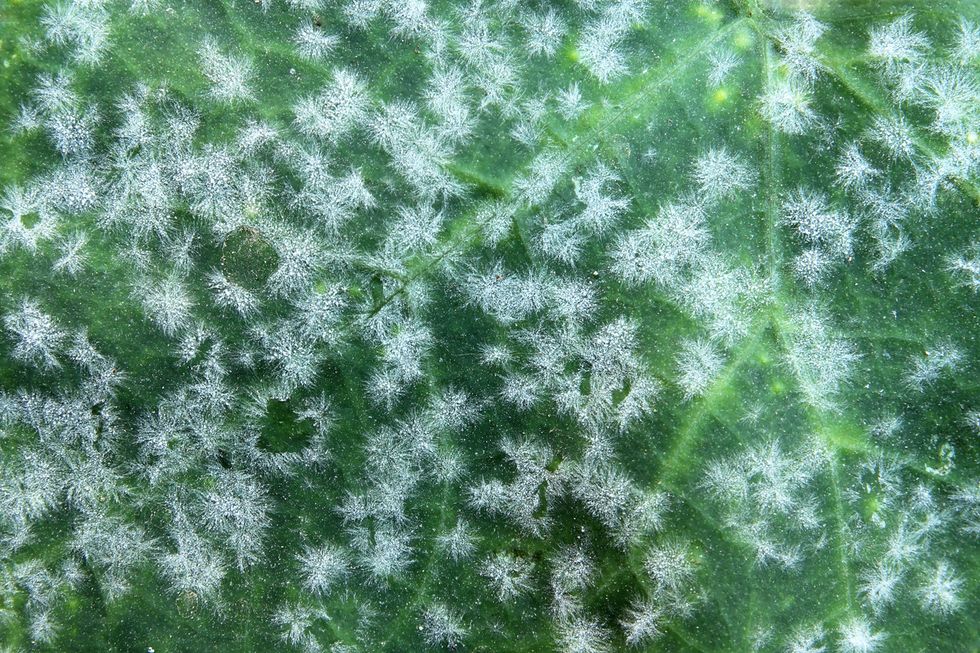Among all of the extraordinary delights of the flower garden, a very familiar bloom always sparks loads of admiration from veteran horticulturists and casual passersby alike. The zinnia — a plant native to Mexico — brightens up our garden from midsummer all the way to the first hard frost. But these summer flowers earn their place in our hearts for more than their good looks. Read on to see what these special plants have to offer.
Growing Zinnias From Seeds
Growing zinnias from seed might be one of the easiest gardening tasks of the year. Where spring warms up early, wait until the last frost has passed before directly sowing zinnia seeds outside. Plant the seeds only about ¼-inch deep. You'll see seedlings sprout in four to seven days. Once the seedlings reach about three inches tall, thin them so that they're 6 to 18 inches apart to maximize air circulation, a key to keeping zinnias looking good all season.
In cooler climates, start seeds indoors four to six weeks before your area's average last-frost date. Harden off the plants by vacationing trays outside for a few hours per day before planting them in your garden.
If you buy zinnia plants at the garden center that have already reached the size at which flowers bloom, ease the transition to your garden by pruning the plants back by one-third. Then sit back and watch your zinnia patch mature and flourish.
Choosing Types of Zinnias
From petunia pink to daisy yellow, zinnias come in every eye-catching hue (except true blue) so you can match them with your favorite perennial or annual flowers, foliage plants, and herbs. They look especially beautiful when you sprinkle your seeds among a mix of cut flowers such as dahlias, marigolds, asters, and petunias.
Want tall, back-of-the-border plants with huge blooms like a dahlia? Plant some giant zinnias, which can reach up to 4 feet tall. Need a low growing flower with simple yet colorful petals? Plant dwarf zinnia seeds, which can grow as short as 10-inches tall.
If you want big, bright, and bold flowers, you'll love Benary's Giant, even in the saturated air of a Pennsylvania July, these Goliaths remain mildew-free.
You'll find plenty of mid-height zinnias to choose from but our favorite is the Zowie! Gold Flame. This variety is not towering, but not cowering either; it grows to a robust 30 inches-tall, in an in-your-face blend of red and gold.
The neatly mounded shape, consistent color, and disease and drought tolerance of Profusion zinnias have won over researchers, landscapers, and home gardening experts. Unlike most zinnias, which are sold in multicolored mixes, Profusion is available in single colors of orange, cherry, and white.
For a zinnia with a different look that resists powdery mildew valiantly, try growing the narrow-leaved Star Series or the Crystal Series, which tolerates drought and grows well from seed.
Varieties such as Old Mexico and Persian Carpet have the rich golds, yellows, reds, and copper colors that foreshadow the coming of fall. Old Mexico bears mostly double flowers — two layers of petals rather than one — while Persian Carpet produces 2-inch double and semi-double blooms in bold autumnal shades.
Companion Planting With Zinnias
If there's one thing that's better than a hearty border of cheerful double zinnias, it's a garden plot of zinnias accompanied by a partner that shows them off to their best advantage. Grow the seeds of these winning companion planting combinations: Benary's Giant Lime and Purpletop Vervain, Big Tetra Mix and Purple Knight, Cut and Come Again and red fountain grass, Persian Carpet and Blue Horizon, Profusion Orange and Victoria, Star White and Black-Eyed Susans, and Zowie! Gold Flame and Purple Majesty.
Cutting Zinnias
When zinnias were first introduced to Europeans, the flowers were referred to as the "poorhouse flower" and "everybody's flower" because they were so common and easy to grow in any kind of soil.
The more blooms you snip from zinnias, the more flowers they produce. Zinnias were once popularly called "youth and old age" because old blooms stay fresh as new blooms open throughout the entire summer.
Solving Potential Zinnia Problems
We're ready to guarantee that zinnias will not fail you. But if you live where late summer nights are cool and humid and the soil is often wet, brace yourself for a potential encounter with powdery mildew.
Prevention is your best defense against this troublesome fungus, says Larry Hodgson, author of Annuals for Every Purpose. He recommends protecting zinnia plants from the grayish-white growth by maintaining good air circulation around them, watering at the roots, and choosing mildew-resistant varieties.
Sometimes Japanese beetles will flock to lime and white zinnias. If you live where these beetles are a pest, simply hand-pluck the marauders off the foliage and drop them into a bucket of soapy water.
Saving Zinnia Seeds
You might think that seed saving is a complex challenge best left to advanced gardening pros, but that is not true when you're talking about zinnia seeds. Do this and in a couple of generations of seeds you will have developed your own strain of zinnias selected to perform well in your conditions.
Simply clip off a dried flower head from each color that you want to save. Pull the flower apart and remove the seeds inside or simply put the whole blossom full of seeds into an envelope. Seal and identify the flower color. Keep the seeds in a cool, dry place until it is time to plant next year.
